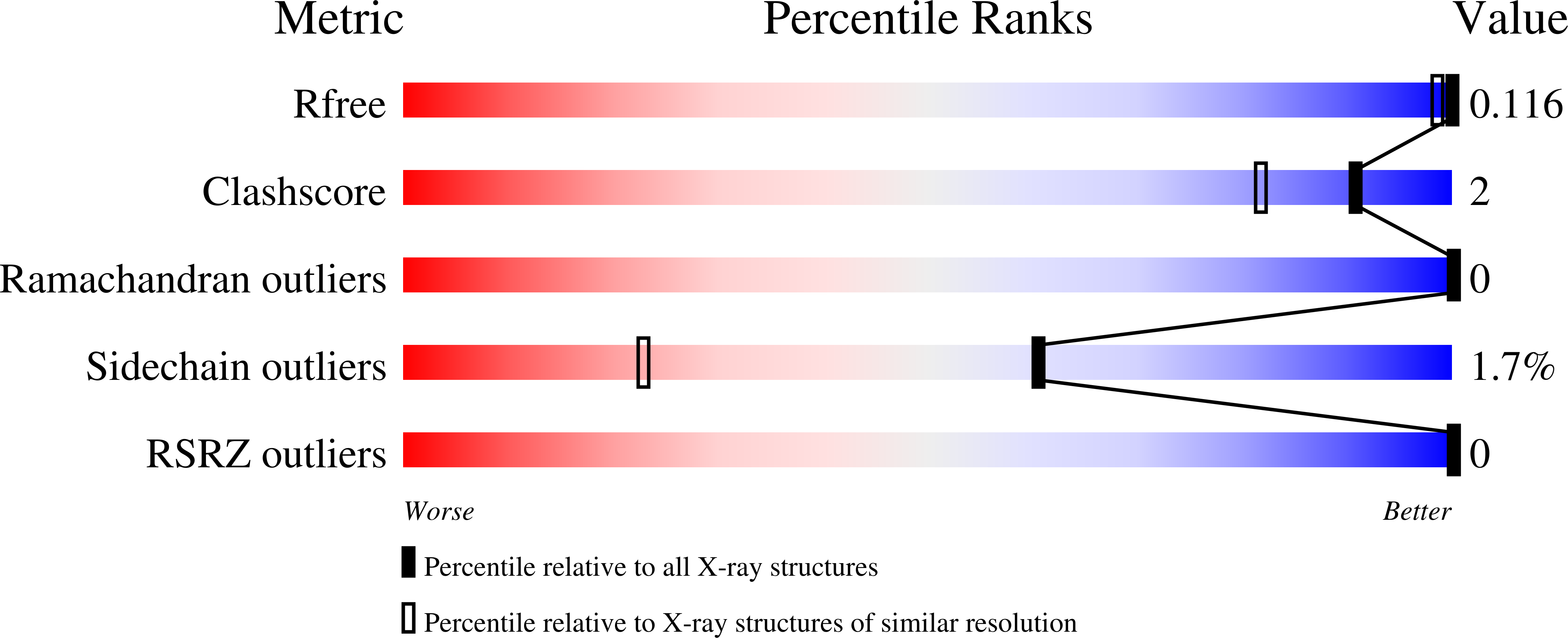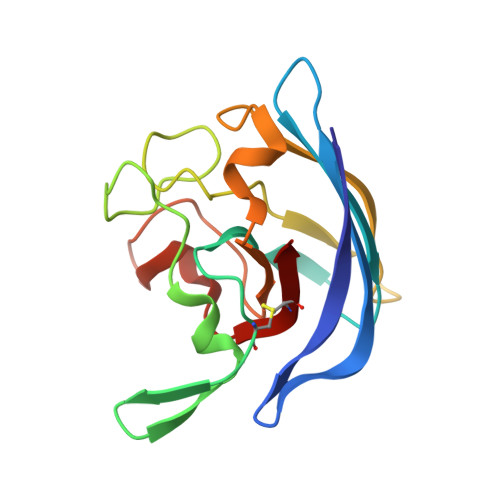Structural, Functional, and Immunogenic Insights on Cu,Zn Superoxide Dismutase Pathogenic Virulence Factors from Neisseria meningitidis and Brucella abortus.
Pratt, A.J., DiDonato, M., Shin, D.S., Cabelli, D.E., Bruns, C.K., Belzer, C.A., Gorringe, A.R., Langford, P.R., Tabatabai, L.B., Kroll, J.S., Tainer, J.A., Getzoff, E.D.(2015) J Bacteriol 197: 3834-3847
- PubMed: 26459556
- DOI: https://doi.org/10.1128/JB.00343-15
- Primary Citation of Related Structures:
4L05 - PubMed Abstract:
Bacterial pathogens Neisseria meningitidis and Brucella abortus pose threats to human and animal health worldwide, causing meningococcal disease and brucellosis, respectively. Mortality from acute N. meningitidis infections remains high despite antibiotics, and brucellosis presents alimentary and health consequences. Superoxide dismutases are master regulators of reactive oxygen and general pathogenicity factors and are therefore therapeutic targets. Cu,Zn superoxide dismutases (SODs) localized to the periplasm promote survival by detoxifying superoxide radicals generated by major host antimicrobial immune responses. We discovered that passive immunization with an antibody directed at N. meningitidis SOD (NmSOD) was protective in a mouse infection model. To define the relevant atomic details and solution assembly states of this important virulence factor, we report high-resolution and X-ray scattering analyses of NmSOD and of SOD from B. abortus (BaSOD). The NmSOD structures revealed an auxiliary tetrahedral Cu-binding site bridging the dimer interface; mutational analyses suggested that this metal site contributes to protein stability, with implications for bacterial defense mechanisms. Biochemical and structural analyses informed us about electrostatic substrate guidance, dimer assembly, and an exposed C-terminal epitope in the NmSOD dimer. In contrast, the monomeric BaSOD structure provided insights for extending immunogenic peptide epitopes derived from the protein. These collective results reveal unique contributions of SOD to pathogenic virulence, refine predictive motifs for distinguishing SOD classes, and suggest general targets for antibacterial immune responses. The identified functional contributions, motifs, and targets distinguishing bacterial and eukaryotic SOD assemblies presented here provide a foundation for efforts to develop SOD-specific inhibitors of or vaccines against these harmful pathogens.
Organizational Affiliation:
Department of Integrative Structural and Computational Biology and The Skaggs Institute for Chemical Biology, The Scripps Research Institute, La Jolla, California, USA Molecular Biophysics and Integrated Bioimaging Division, Lawrence Berkeley National Laboratory, Berkeley, California, USA.



















